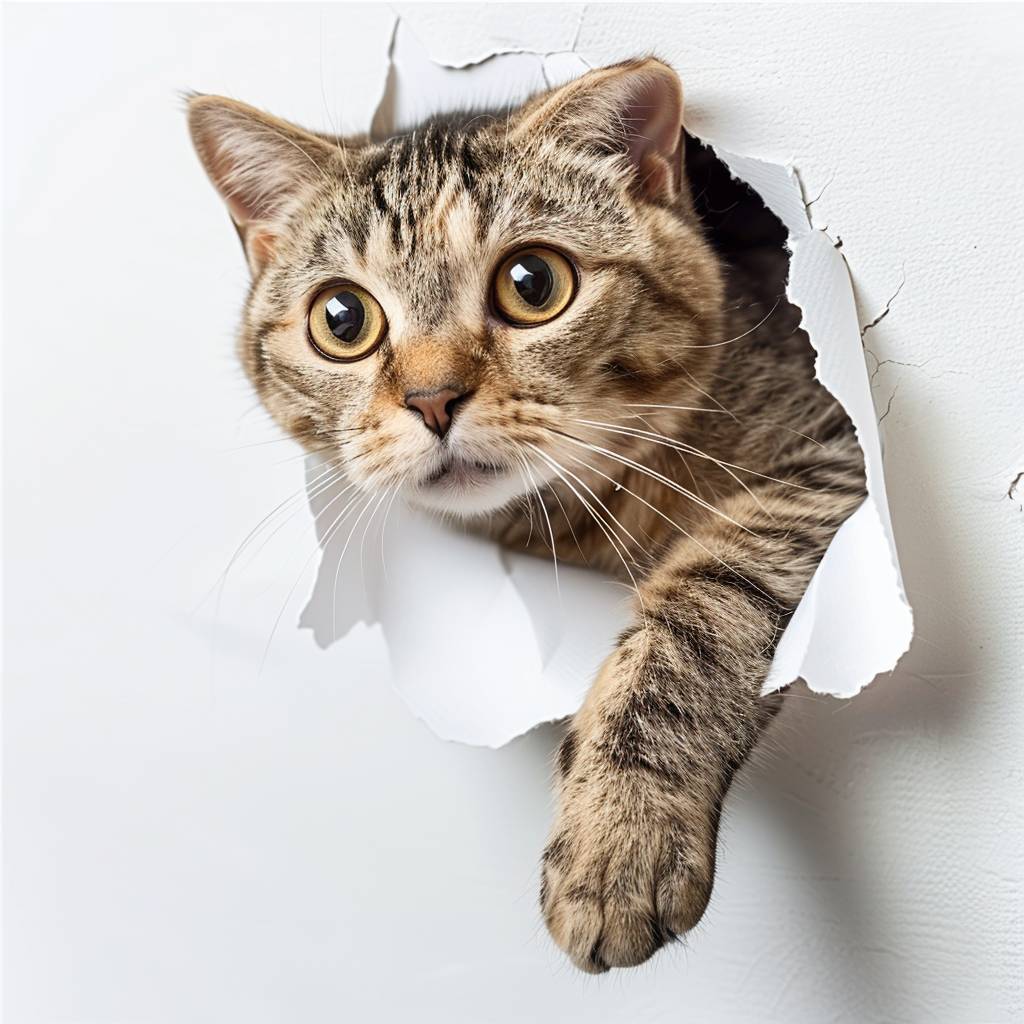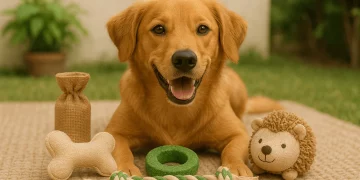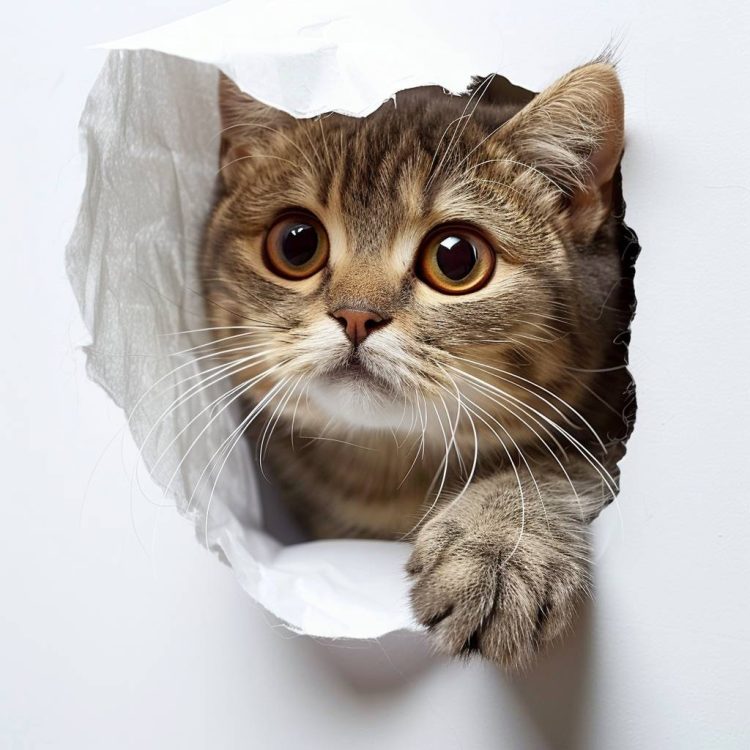Introduction
Scottish Fold cats are known for their adorable, folded ears, calm temperament, and affectionate nature. However, when it comes to training, many cat owners wonder how to work with their Scottish Folds to ensure they are well-behaved, happy, and able to follow basic commands. Training any cat requires patience and understanding, but training a Scottish Fold might have unique considerations due to their breed traits.
In this comprehensive guide, we will explore everything you need to know about training your Scottish Fold cat—from establishing a foundation of trust and positive reinforcement to teaching them fun tricks and managing behavioral challenges. Whether you’re teaching your Scottish Fold basic commands or working on more advanced tricks, this article will provide you with a detailed approach to training.
1. Understanding the Scottish Fold Temperament and Training Challenges
Before diving into training techniques, it’s important to understand the temperament of the Scottish Fold breed, as it influences how they respond to training and which methods work best.
1.1 Personality Traits of Scottish Folds
Scottish Folds are known for their sweet, quiet, and affectionate nature. These cats typically enjoy spending time with their human companions, are playful, and love attention, but they tend to be laid-back and may not be as active as some other breeds. Their relaxed temperament can be both a benefit and a challenge in training.
- Affectionate: Scottish Folds tend to be loving and enjoy cuddling with their owners, which makes them responsive to positive reinforcement such as petting or treats.
- Curious: Although they are calm, they are still curious by nature and will often explore their environment. This curiosity can be harnessed during training to keep them engaged.
- Independent: Scottish Folds can be independent thinkers, which may sometimes make them less eager to follow commands, especially if they don’t see a direct benefit to the behavior.
1.2 Challenges in Training Scottish Folds
Because Scottish Folds are not typically known for being overly energetic or highly motivated to please, they may take longer to train compared to more active or highly trainable breeds. However, with patience, consistency, and positive reinforcement, they can be successfully trained.
2. The Basics of Training Any Cat
Whether you have a Scottish Fold or any other breed, the fundamental principles of cat training are the same. Understanding these basic training concepts is essential before diving into specific techniques for Scottish Folds.
2.1 Positive Reinforcement: The Key to Success
Cats, including Scottish Folds, learn best when they are rewarded for behaviors you want to encourage. Positive reinforcement is the cornerstone of effective cat training.
- Treats: Use small, tasty treats as rewards. Make sure they are healthy and easy for your cat to chew.
- Praise: Verbal praise or petting can also be used as reinforcement for good behavior.
- Clicker Training: A clicker is a useful tool in training as it provides an audible sound that marks the exact moment your cat performs the desired behavior. Clicker training, combined with treats, helps your Scottish Fold connect the behavior with the reward.
2.2 Consistency is Crucial
Cats, including Scottish Folds, are creatures of habit. For training to be effective, consistency is key. Use the same words, gestures, and rewards each time you want to reinforce a behavior. If you want your Scottish Fold to learn a new behavior, repetition and consistency will help them form connections between the action and the reward.
2.3 Patience and Persistence
Training a Scottish Fold, or any cat, requires patience. Unlike dogs, cats are not always eager to please on command. It’s important to be patient, work at your cat’s pace, and keep training sessions short to avoid overwhelming them.
3. Building a Strong Bond with Your Scottish Fold Through Training
Before you start formal training, it’s important to establish a bond of trust with your Scottish Fold. When they trust you, they will be more likely to respond to your cues and follow commands.
3.1 Creating a Safe and Positive Environment
For successful training, create a calm, distraction-free environment where your Scottish Fold feels secure. Training should take place in a quiet area with minimal distractions.
- Use a calm, gentle voice during training sessions.
- Avoid raising your voice or punishing your cat, as this can cause fear and hinder learning.
3.2 Building Trust
Spend time playing with your Scottish Fold, offering them attention, and letting them get used to your presence. This will help them associate you with positive experiences. Training can be an extension of your relationship-building process, using treats and praise to foster cooperation and trust.

4. Basic Training Techniques for Your Scottish Fold
Once you’ve established a foundation of trust, you can begin working on basic training with your Scottish Fold.
4.1 Litter Box Training
Litter box training is one of the first things you’ll want to address, as it’s essential for maintaining a clean and healthy environment.
- Choose the Right Litter Box: Make sure it’s the right size for your Scottish Fold and placed in a quiet, easily accessible area. Some cats prefer covered boxes, while others like open ones.
- Consistency: Place your cat in the litter box after meals, naps, and playtime. Reward them immediately when they use it.
- Cleanliness: Keep the litter box clean, as cats are more likely to use a dirty box.
4.2 Teaching Your Scottish Fold to Come When Called
Teaching your Scottish Fold to come when called is a valuable skill, and it’s relatively easy to train using positive reinforcement.
- Start with Their Name: Call your cat by name in a calm, upbeat voice. When they look at you or come towards you, immediately reward them with a treat or praise.
- Gradual Increase in Distance: Once your Scottish Fold associates their name with a reward, you can increase the distance between you and your cat, calling them from different parts of the room.
4.3 Teaching Your Scottish Fold to Sit
Teaching your Scottish Fold to sit is a simple trick that can serve as the foundation for more complex training later on.
- Use Treats: Hold a treat close to their nose and slowly move it upward, which will naturally cause your cat to sit down. Once they are sitting, immediately give them the treat.
- Command Word: Pair the action with a consistent command, such as “sit.” Once your Scottish Fold associates the action with the command and reward, they will learn to sit on command.
5. Advanced Training: Tricks and Behavior Modification
After mastering the basics, you can move on to teaching your Scottish Fold more advanced tricks and behaviors.
5.1 Teaching Your Scottish Fold to High-Five or Shake Paws
This is a fun trick to teach your Scottish Fold, and it can be a good way to engage with your cat during training sessions.
- Lure the Paw: Hold a treat in your hand and gently guide your cat’s paw toward your hand. Once they lift their paw, reward them with the treat and praise.
- Repetition: Repeat this process, eventually adding the command “high-five” or “shake” before offering the treat.
5.2 Teaching Your Scottish Fold to Fetch
Some Scottish Folds enjoy playing fetch, and this trick can be taught with patience and persistence.
- Use a Favorite Toy: Start with a small toy or ball that your cat likes. Toss it a short distance, and when your cat picks it up, call them to return the toy.
- Reward: When your Scottish Fold brings the toy back, reward them with a treat and praise.
5.3 Solving Behavioral Problems: Scratching and Jumping
Scottish Folds, like all cats, need an appropriate outlet for their natural scratching behavior. However, sometimes they may scratch furniture or jump where they shouldn’t.
- Scratching: Provide scratching posts or pads to give your cat a designated place to scratch. If they scratch furniture, gently redirect them to the post and reward them for using it.
- Jumping: If your Scottish Fold is jumping on counters or tables, try using positive reinforcement to reward them for staying on the floor. Alternatively, provide them with a designated high perch or shelf that satisfies their desire to climb.
6. Troubleshooting Common Training Issues with Scottish Folds
Training is not always smooth sailing, and there are common challenges that owners of Scottish Folds (and other cats) may face. Here are some troubleshooting tips:
6.1 Lack of Motivation
If your Scottish Fold isn’t responding to training, it could be due to a lack of motivation. Consider changing the reward to something your cat finds more enticing, like a different type of treat or extra playtime.
6.2 Attention Span
Scottish Folds, like most cats, have short attention spans. Keep training sessions brief—5 to 10 minutes at a time—and increase the frequency if needed.
6.3 Fear or Anxiety
If your Scottish Fold shows signs of fear or anxiety during training (e.g., running away, hissing, or growling), take a step back and slow down. Make sure to create a safe and positive environment for them and avoid pushing them too hard.
7. Conclusion: Building a Lifelong Relationship Through Training
Training your Scottish Fold is not just about teaching them tricks; it’s about strengthening the bond you share and ensuring they live a fulfilling, comfortable life in your home. By using positive reinforcement, patience, and consistency, you can teach your Scottish Fold a variety of behaviors—from basic commands to more advanced tricks—while respecting their independent nature.
Remember, every cat is unique, and what works for one may not work for another. The key to successful training lies in understanding your Scottish Fold’s personality and adapting your approach to meet their needs. With time, effort, and love, you’ll be rewarded with a well-behaved and happy Scottish Fold.























































